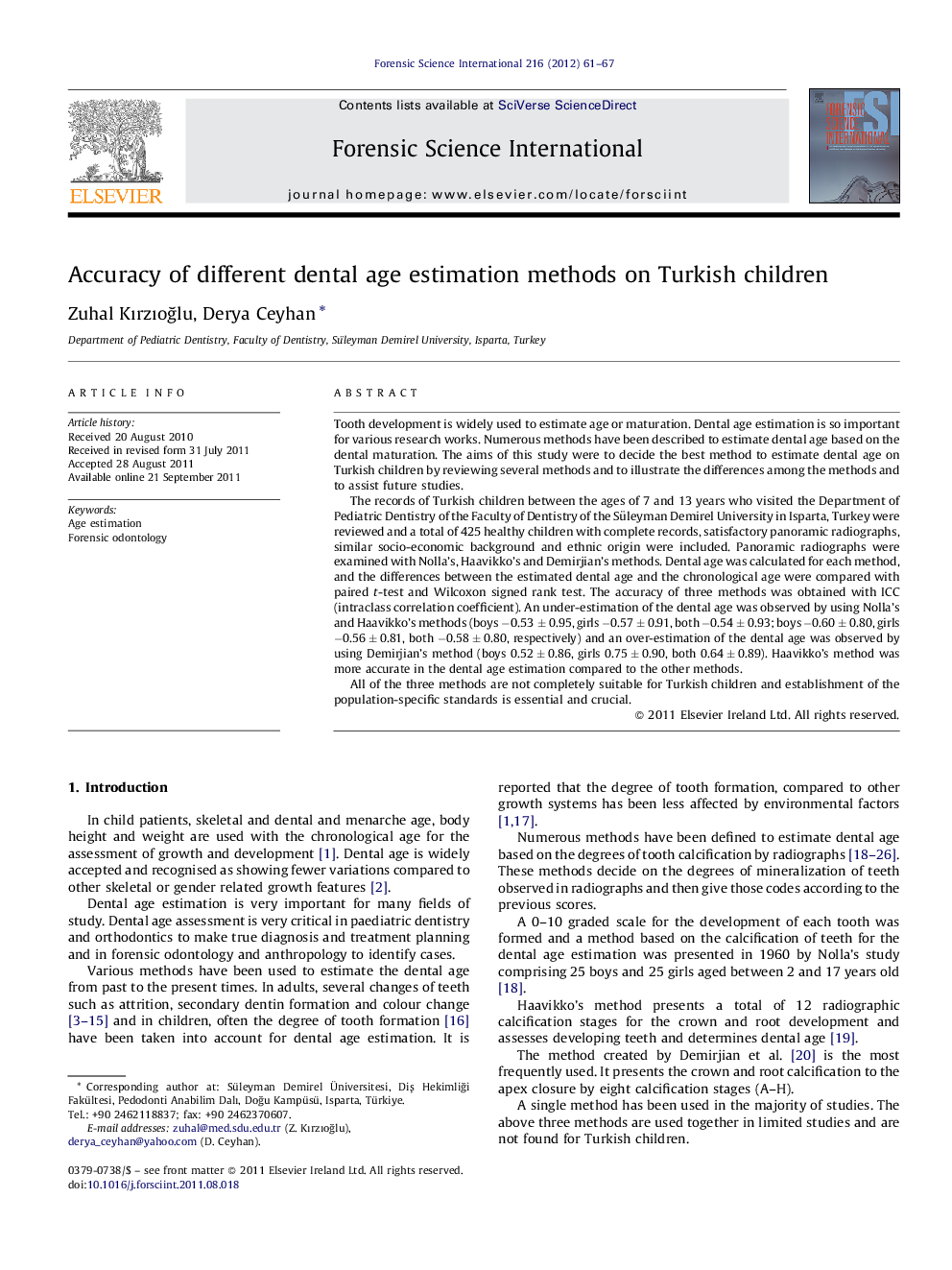| کد مقاله | کد نشریه | سال انتشار | مقاله انگلیسی | نسخه تمام متن |
|---|---|---|---|---|
| 96094 | 160455 | 2012 | 7 صفحه PDF | دانلود رایگان |

Tooth development is widely used to estimate age or maturation. Dental age estimation is so important for various research works. Numerous methods have been described to estimate dental age based on the dental maturation. The aims of this study were to decide the best method to estimate dental age on Turkish children by reviewing several methods and to illustrate the differences among the methods and to assist future studies.The records of Turkish children between the ages of 7 and 13 years who visited the Department of Pediatric Dentistry of the Faculty of Dentistry of the Süleyman Demirel University in Isparta, Turkey were reviewed and a total of 425 healthy children with complete records, satisfactory panoramic radiographs, similar socio-economic background and ethnic origin were included. Panoramic radiographs were examined with Nolla's, Haavikko's and Demirjian's methods. Dental age was calculated for each method, and the differences between the estimated dental age and the chronological age were compared with paired t-test and Wilcoxon signed rank test. The accuracy of three methods was obtained with ICC (intraclass correlation coefficient). An under-estimation of the dental age was observed by using Nolla's and Haavikko's methods (boys −0.53 ± 0.95, girls −0.57 ± 0.91, both −0.54 ± 0.93; boys −0.60 ± 0.80, girls −0.56 ± 0.81, both −0.58 ± 0.80, respectively) and an over-estimation of the dental age was observed by using Demirjian's method (boys 0.52 ± 0.86, girls 0.75 ± 0.90, both 0.64 ± 0.89). Haavikko's method was more accurate in the dental age estimation compared to the other methods.All of the three methods are not completely suitable for Turkish children and establishment of the population-specific standards is essential and crucial.
Journal: Forensic Science International - Volume 216, Issues 1–3, 10 March 2012, Pages 61–67